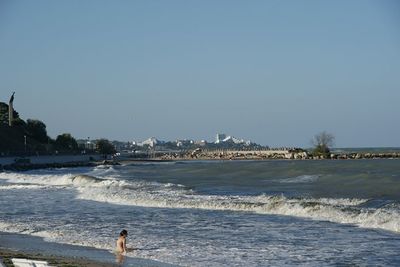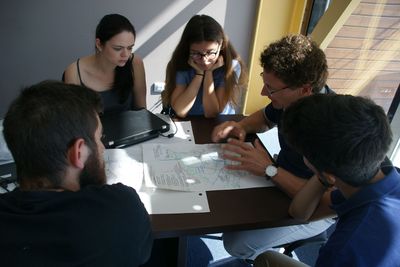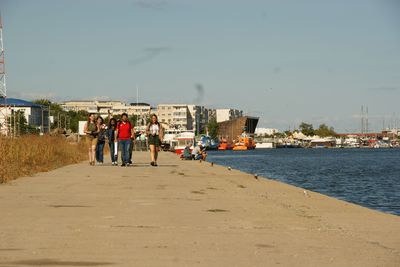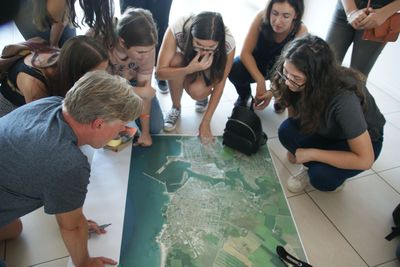COLAND Intensive Study Programme Mangalia 2018: Difference between revisions
No edit summary |
No edit summary |
||
| Line 4: | Line 4: | ||
[[File:COLAND ISP Mangalia 23.jpg|Field studies on the Mangalia case|thumb|400px|right]] | [[File:COLAND ISP Mangalia 23.jpg|Field studies on the Mangalia case|thumb|400px|right]] | ||
[[File:COLAND ISP Mangalia 24.jpg|Participatory landscape assessment with a local school class|thumb|400px|right]] | [[File:COLAND ISP Mangalia 24.jpg|Participatory landscape assessment with a local school class|thumb|400px|right]] | ||
[[File:Eu funded led.jpg|thumb|right|400px|The CO-LAND Project has been (partially) funded by the ERASMUS+ grant program of the European Union under grant no. 2017-1-RO01-KA203-037161. Neither the European Commission nor the project's national funding agency are responsible for the content or liable for any losses or damage resulting of the use of these resources.]] | |||
== Key dates of the Mangalia Intensive Study Programme == | == Key dates of the Mangalia Intensive Study Programme == | ||
Revision as of 09:05, 7 February 2019

Key dates of the Mangalia Intensive Study Programme
- Implementation, September 16 - 25, 2018
- Cooperation partners: Municipality of Mangalia and NGO Proactiv Pentru Communitate
- Participants: 30 staff members and local experts and 28 students
The Mangalia Context
Mangalia is a small town of 40.000 inhabitants situated on the Romanian Black Sea Shore close to the Bulgarian border. The town has seen very dynamic developments in the 1960’s and 1970’s during which huge public investments into coastal tourism were made by the central government. The town therefore exists today of a multifunctional urban centre plus the northern ‘satellites’ of Saturn, Venus, Jupiter, Neptun and Olymp. All of these are spas dating from the 1970’s, built during the socialist period as a public investment according to modernist design principles.
The city itself is not solely based on tourism since it also hosts some industry, commerce and a major shipyard. Being founded as a Greek port in 600 AD the cultural heritage of Mangalia is multifaceted, but poorly visible in the urban landscape of today. The same applies to the rich and unique natural zones which are not sufficiently integrated into the urban tissue. Mangalia is facing many challenges, of which the constant outmigration of the younger generation is probably the most threatening.
In order to approach this situation in a holistic way the city has published a local development strategy in 2016 which envisions Mangalia as a ‘Green City’ by 2023. The community is certainly very well aware of the need to redevelop a green and blue infrastructure for the benefit of its local economy and quality of life. Our study group will link to this goal and support the community by translating the strategy into concrete proposals.
Overall Objective
Ensuring the connectivity, validation, protection and multifunctionality of Mangalia’s green network bears enormous potential for the city. This topic should be combined with the conception of a hiking and cycling network for sustainable transport. The Green Infrastructure network could further support the connectivity and accessibility of Mangalia’s heritage areas. Combining ecological, social and economic benefits by an overarching Green Infrastructure strategy can build a powerful framework for joining the forces of different actors and interest groups towards a common goal. Green and Blue Infrastructure serves as the guiding principle for the working groups.
Working Groups
The COLAND workshop in Mangalia approached this landscape from five complementary perspectives:
- Green and Blue Infrastructure: Ecosystem Services and Sustainable Mobility
- Heritage and Identities
- Living on the coast: Housing, working, community life and identities
- Productive Landscapes, Circular Economy and Landscape Protection
- Nature-based rural tourism
Publication and Results
- A workshop documentation is under development and will be published soon via this wiki.




